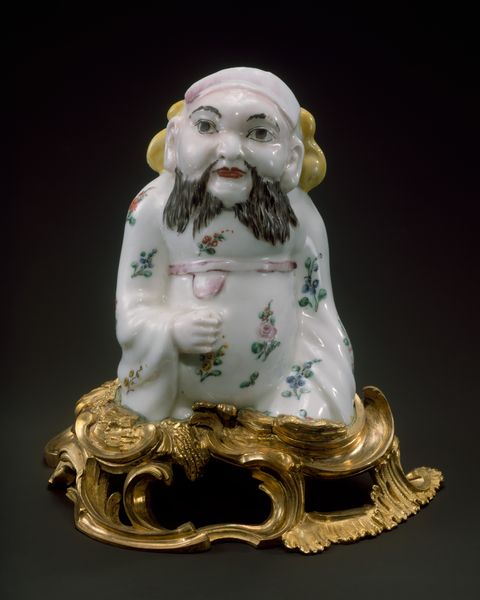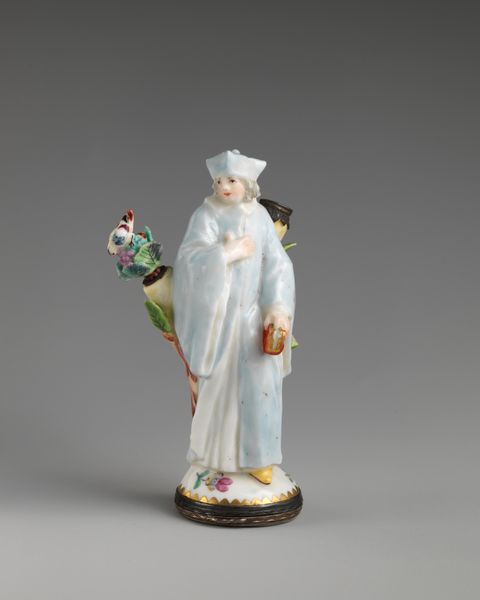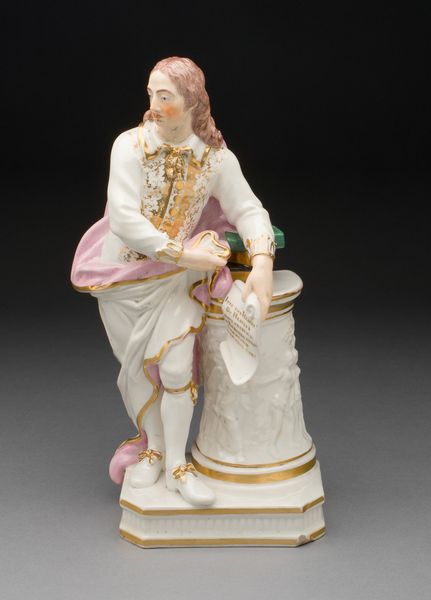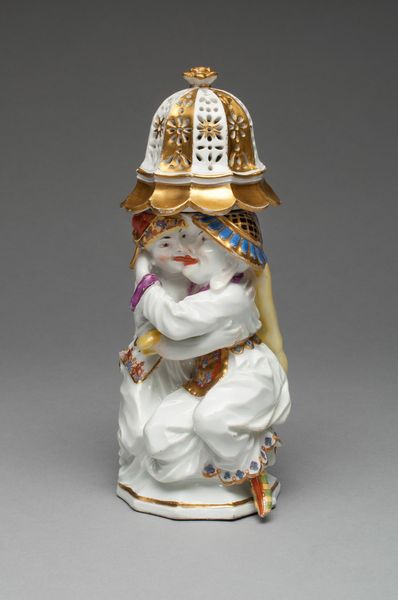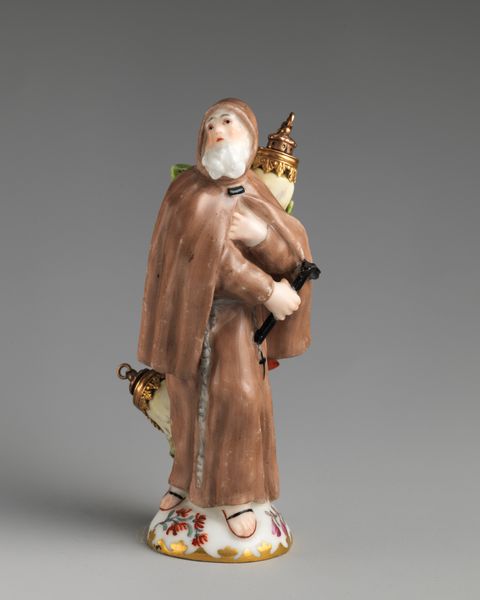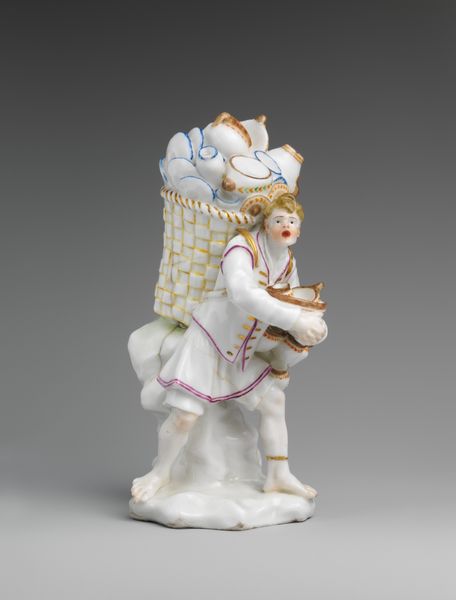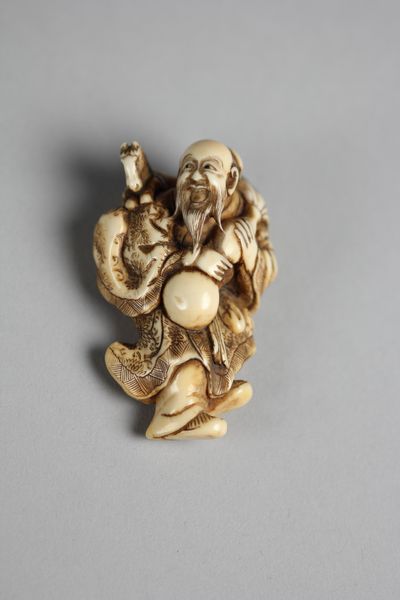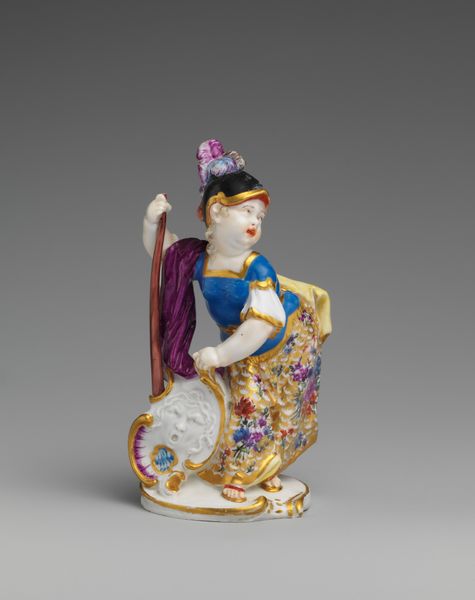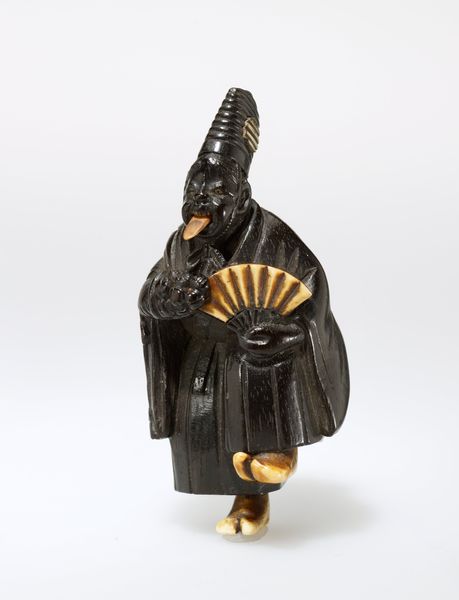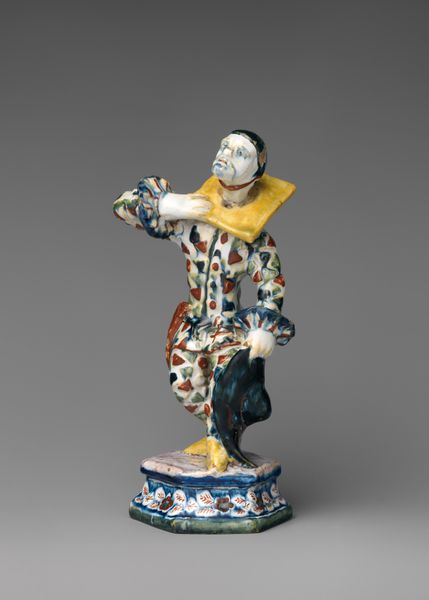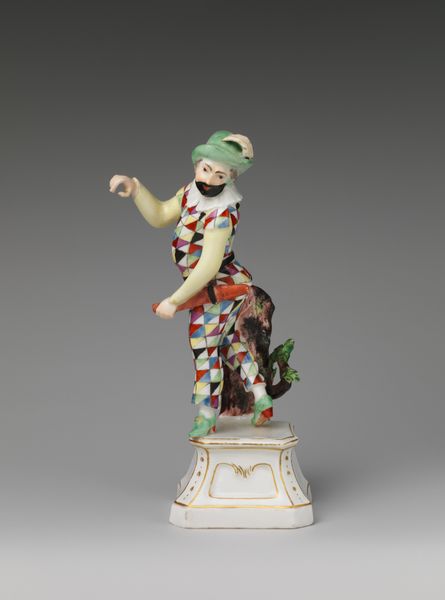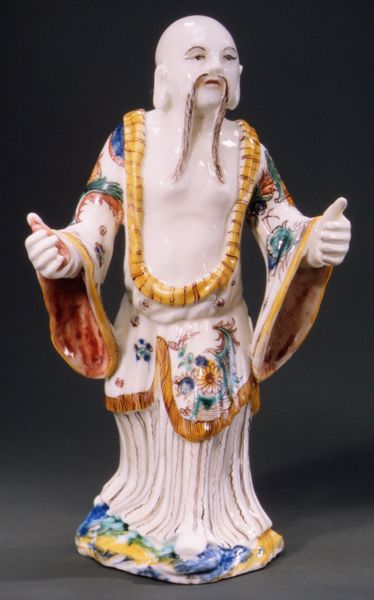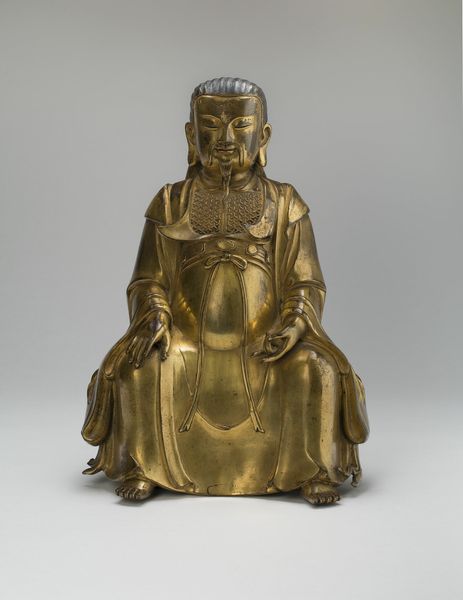
Dwarf as a Turkish Pasha 1740 - 1755
0:00
0:00
ceramic, porcelain, sculpture
#
portrait
#
baroque
#
sculpture
#
ceramic
#
porcelain
#
figuration
#
sculpture
#
decorative-art
#
miniature
Dimensions: Height: 6 in. (15.2 cm)
Copyright: Public Domain
Editor: Here we have "Dwarf as a Turkish Pasha," a porcelain sculpture from the mid-18th century, made by the Capodimonte Porcelain Manufactory. The figure is so meticulously detailed; you can see the individual gold stripes on his turban and the floral patterns on his robe. What strikes me is the artist's decision to portray a dwarf in such opulent clothing. What's your interpretation? Curator: The use of porcelain itself is crucial here. Its production was intensely controlled and highly valued, especially in the 18th century. Think about the labor involved in sourcing the materials, the skilled craftspeople needed for molding and firing, and the elite clientele who would acquire such an object. The figure represents not just an individual, but the vast resources and power relations inherent in its very creation. What does the subject matter communicate? Editor: So the luxury of the material emphasizes the… disparity between the figure's stature and his assumed social standing? It seems to amplify a sort of… comedic effect. Curator: Precisely. But I suggest going further to scrutinize that reaction, to consider the exploitation inherent in its consumption and context. "Comedic" for whom? The miniature represents social dynamics related to power, wealth, class, and even perhaps the exoticism often associated with the "Turkish Pasha" figure. Think about the hands that formed this object, for whom was the final product crafted, and to what end? It makes me ask difficult questions, such as: who gets to consume luxury? And who has the privilege of representation? Editor: I never thought of porcelain itself carrying so much meaning! I focused on the artistry and subject at face value, but you've highlighted the complex social context ingrained in its production. Curator: Exactly. By questioning the materials and mode of production, it offers profound insights into the historical power structures. Editor: I see it differently now. Thank you!
Comments
No comments
Be the first to comment and join the conversation on the ultimate creative platform.
